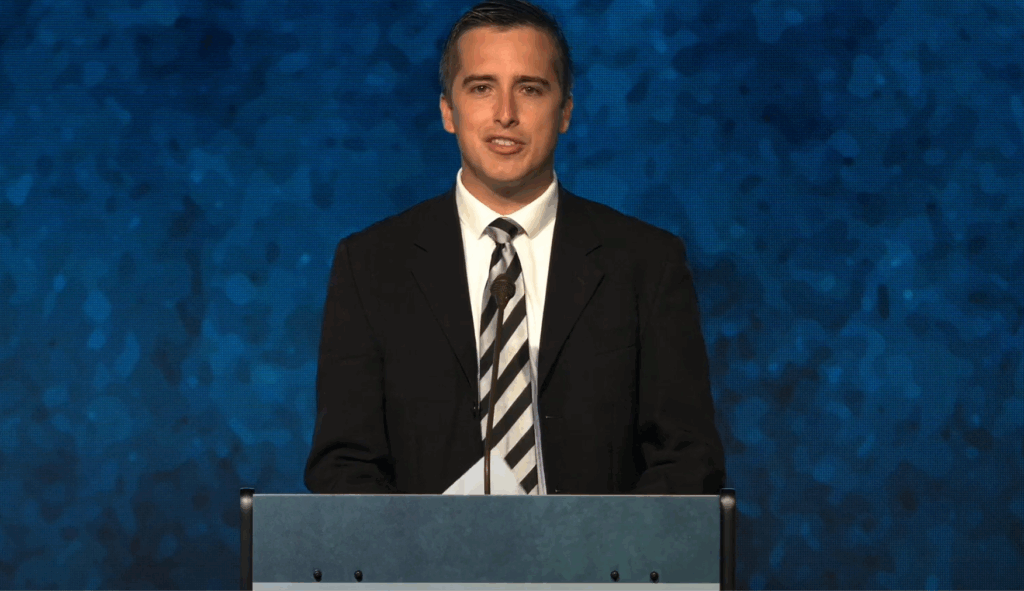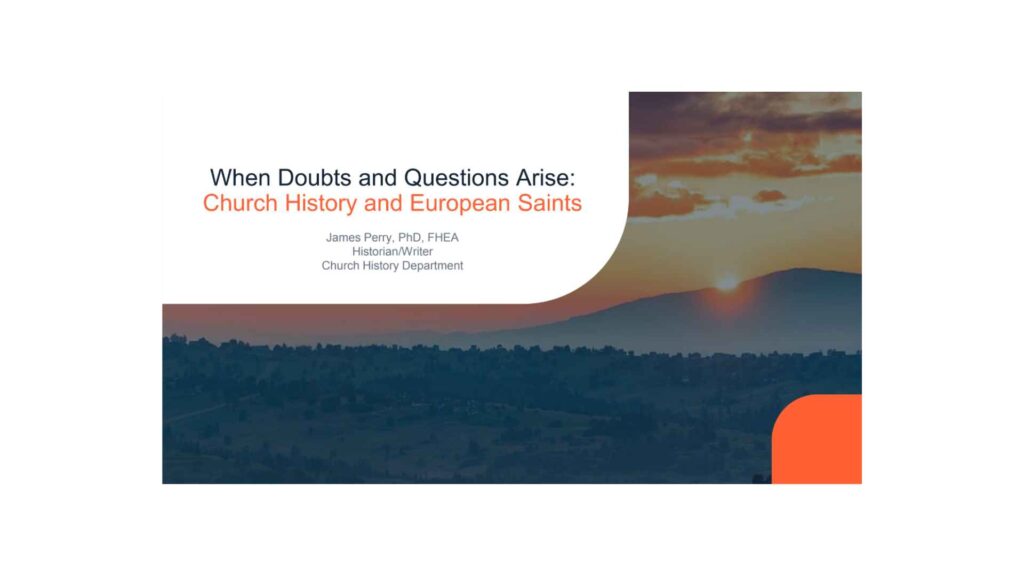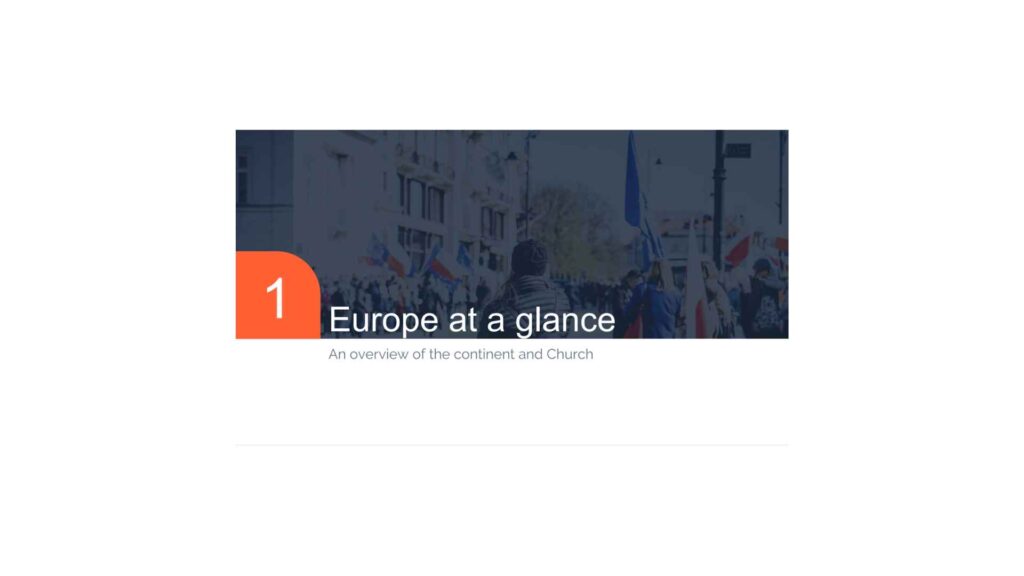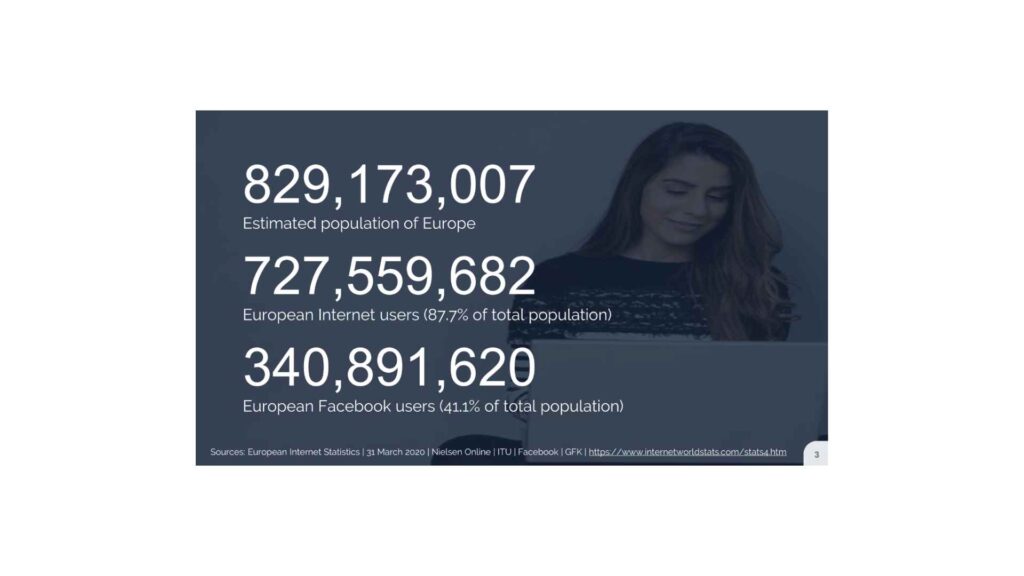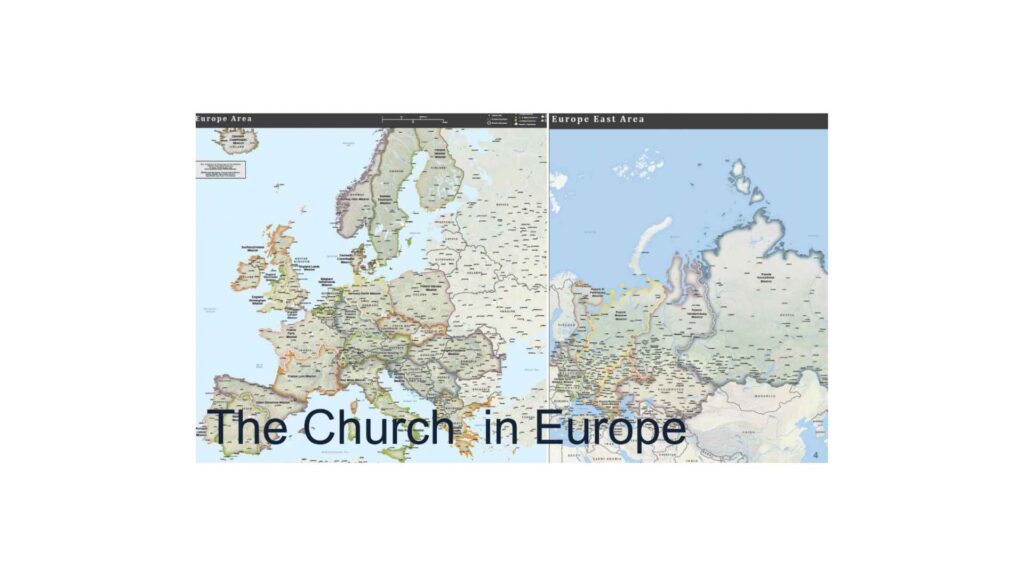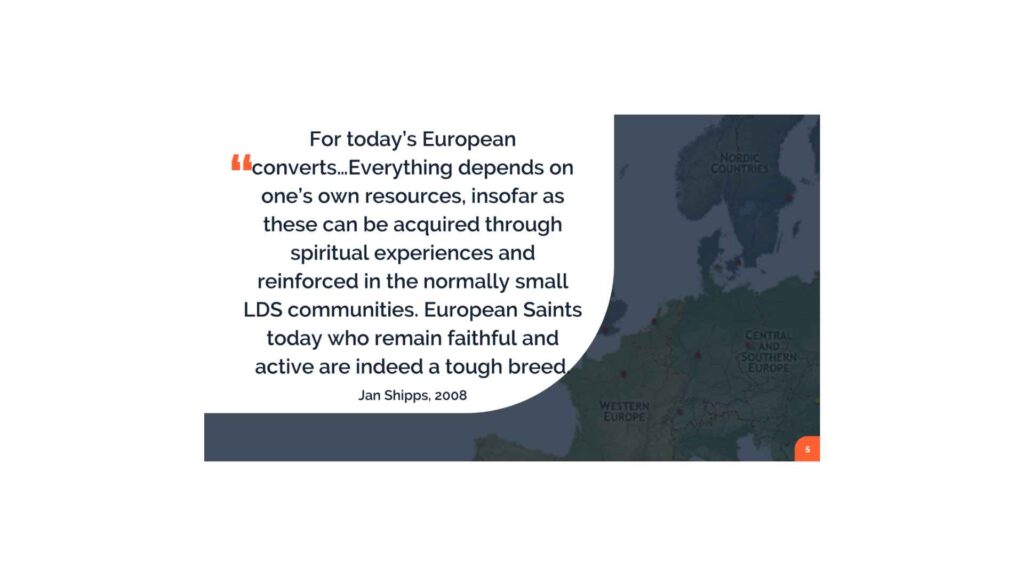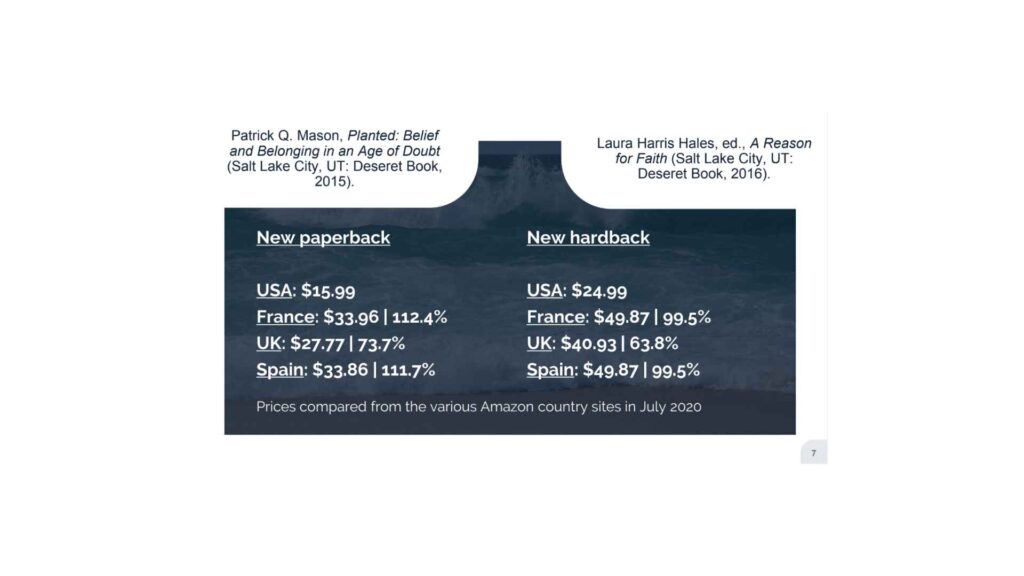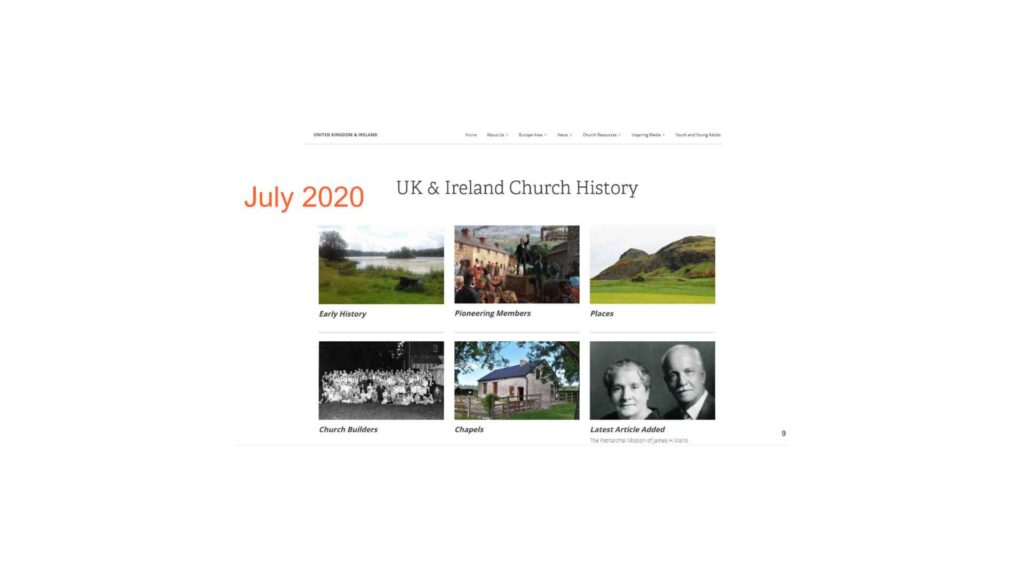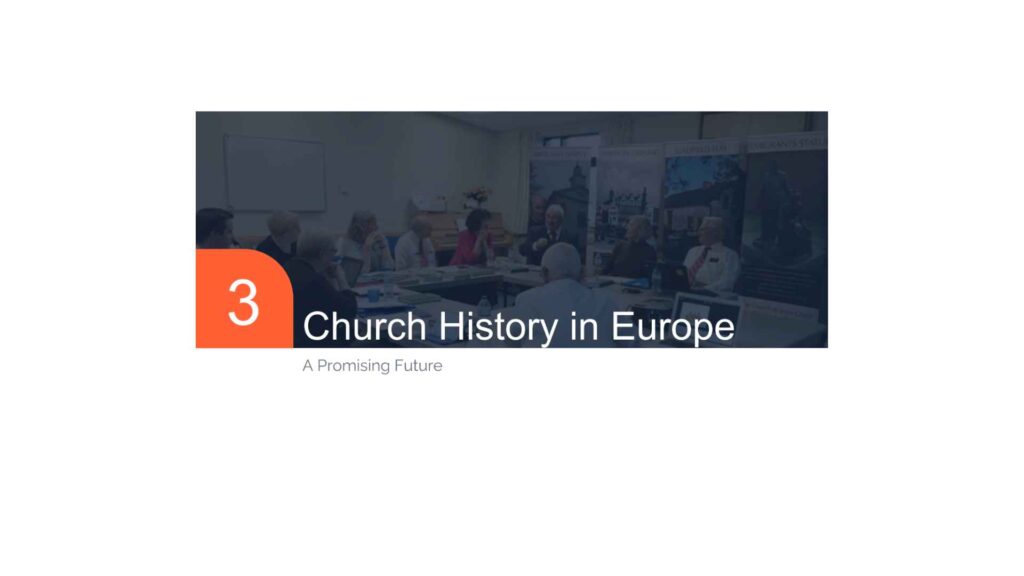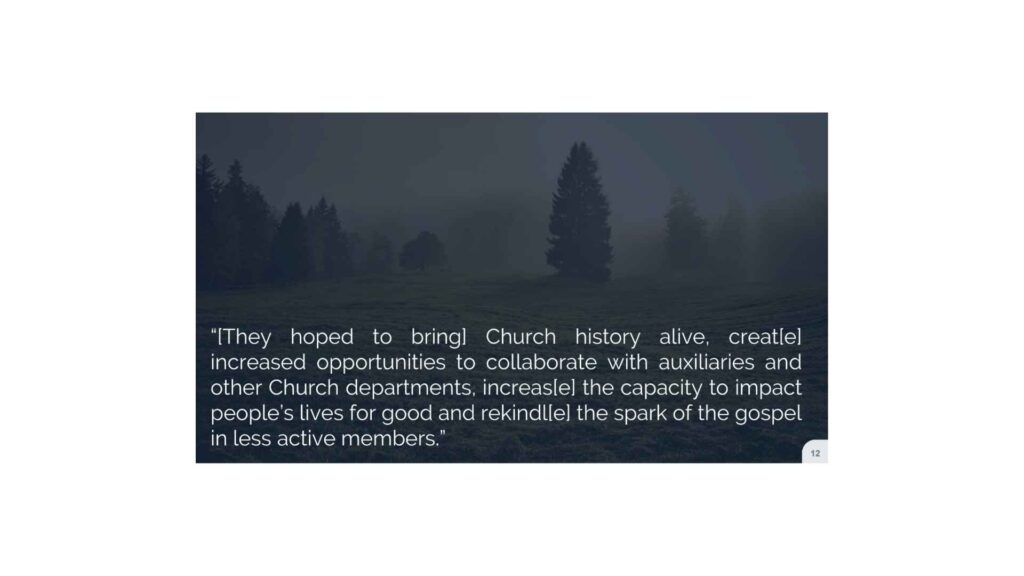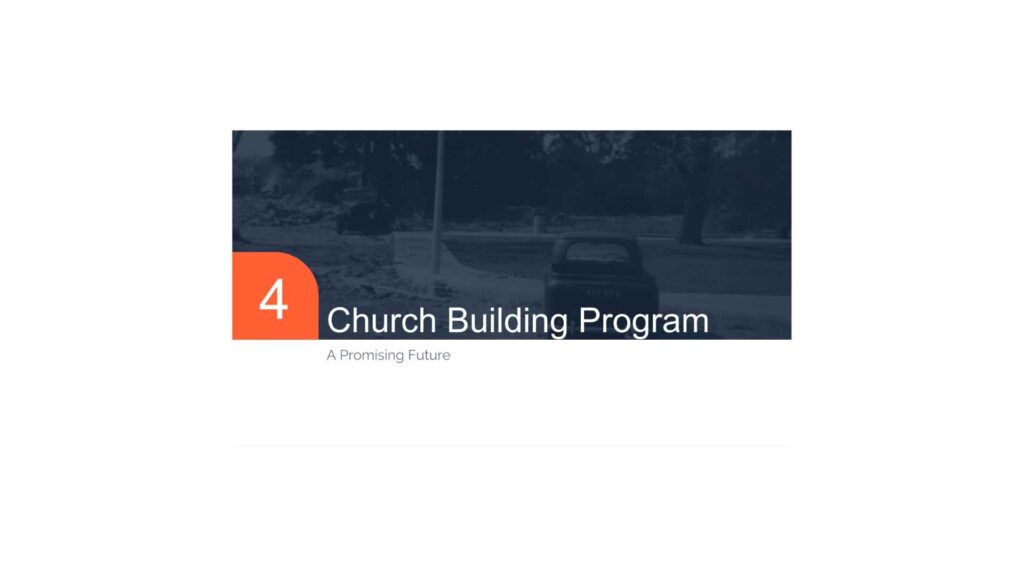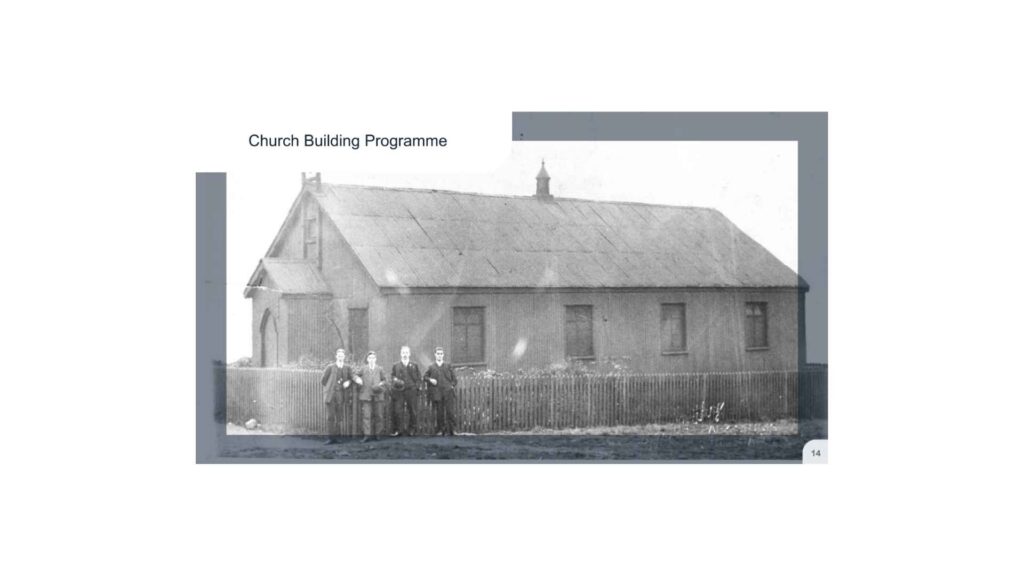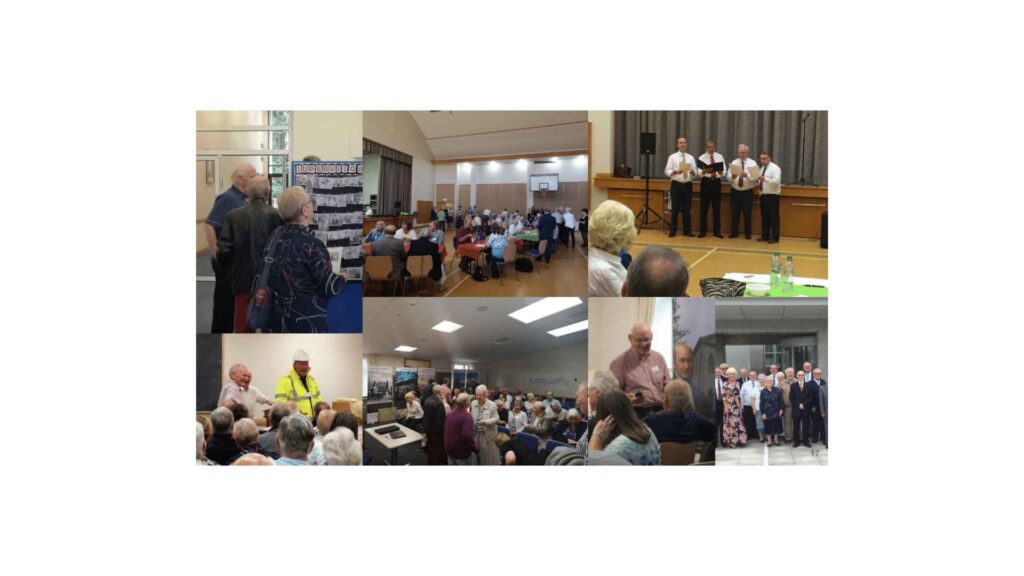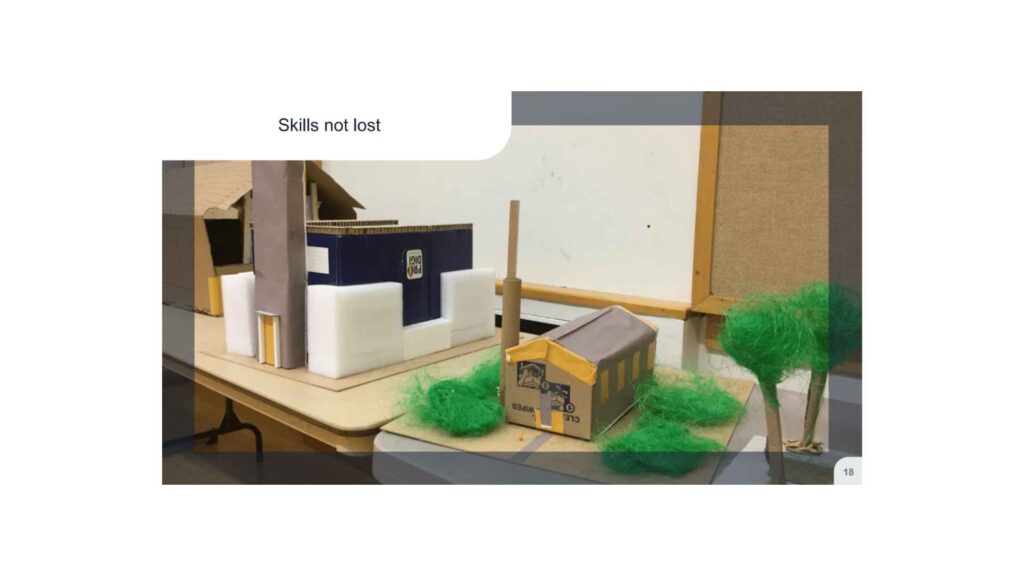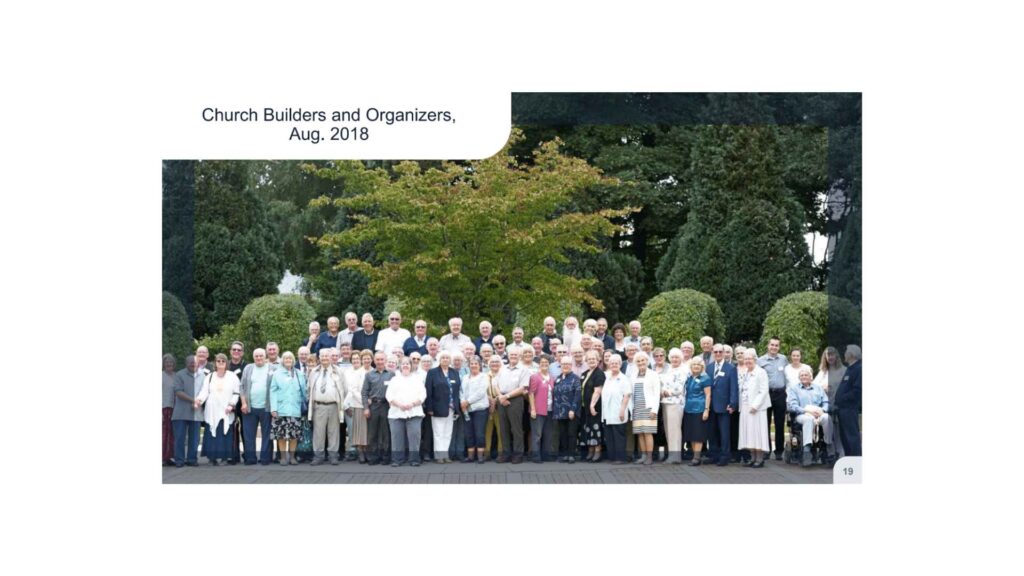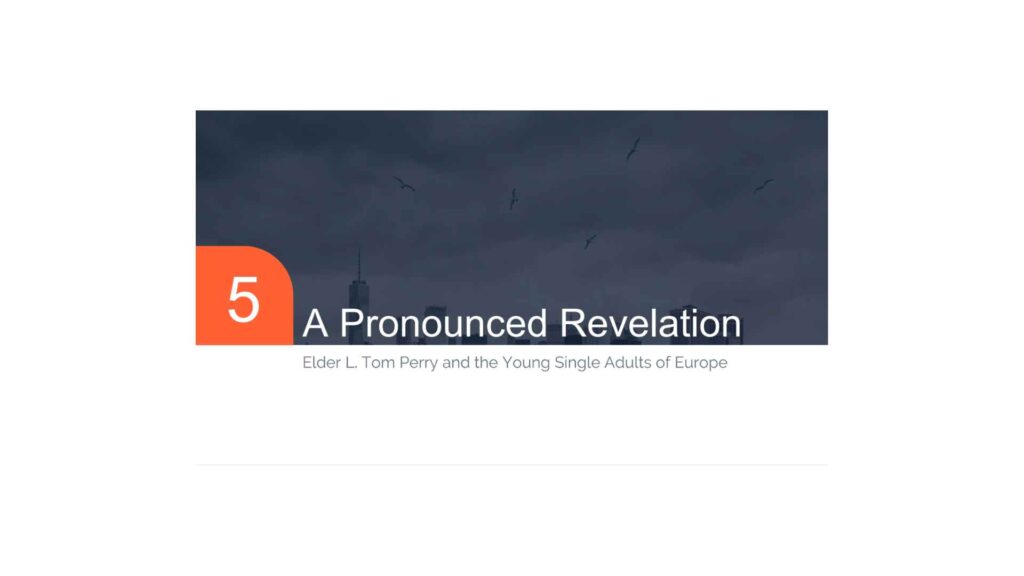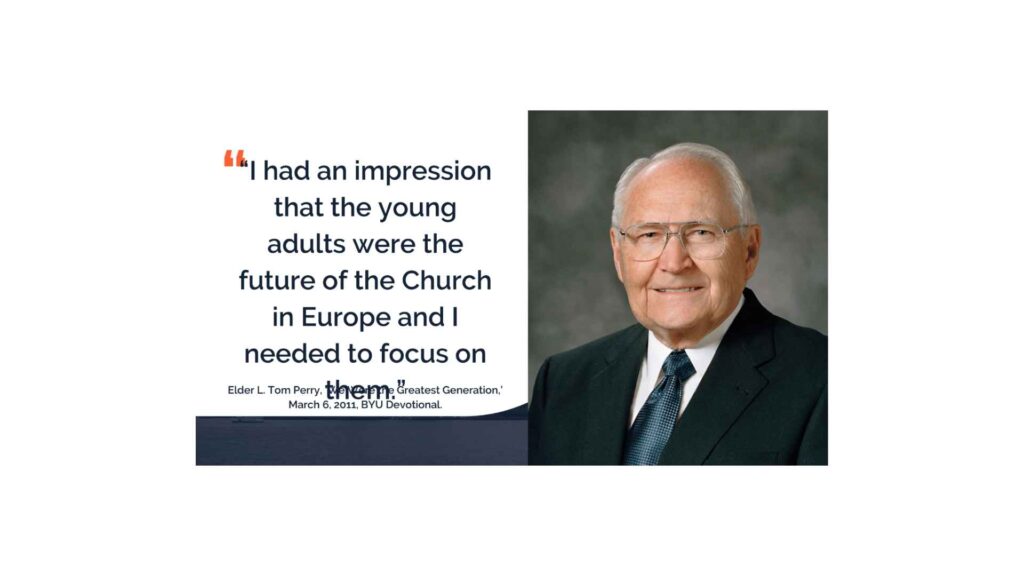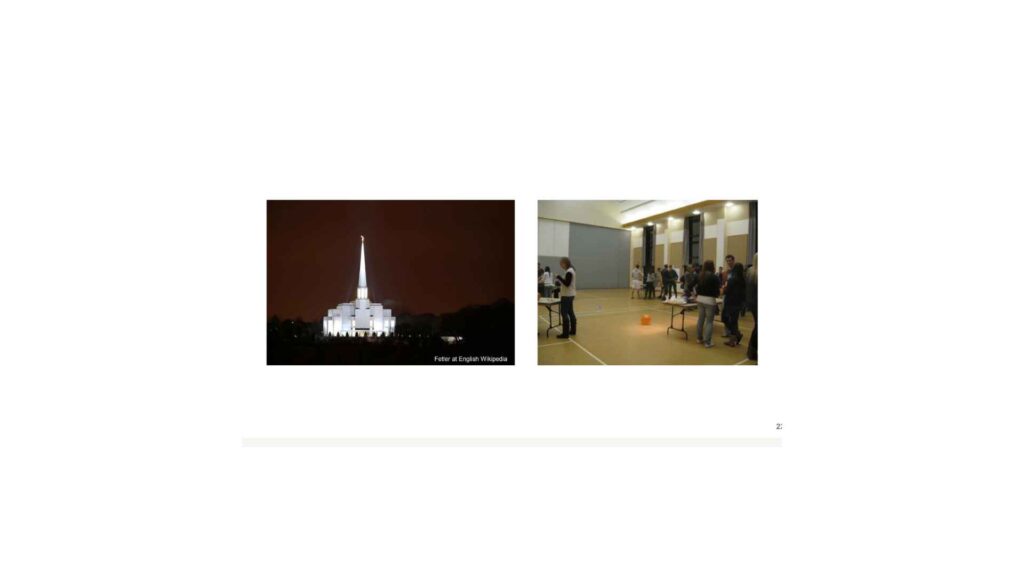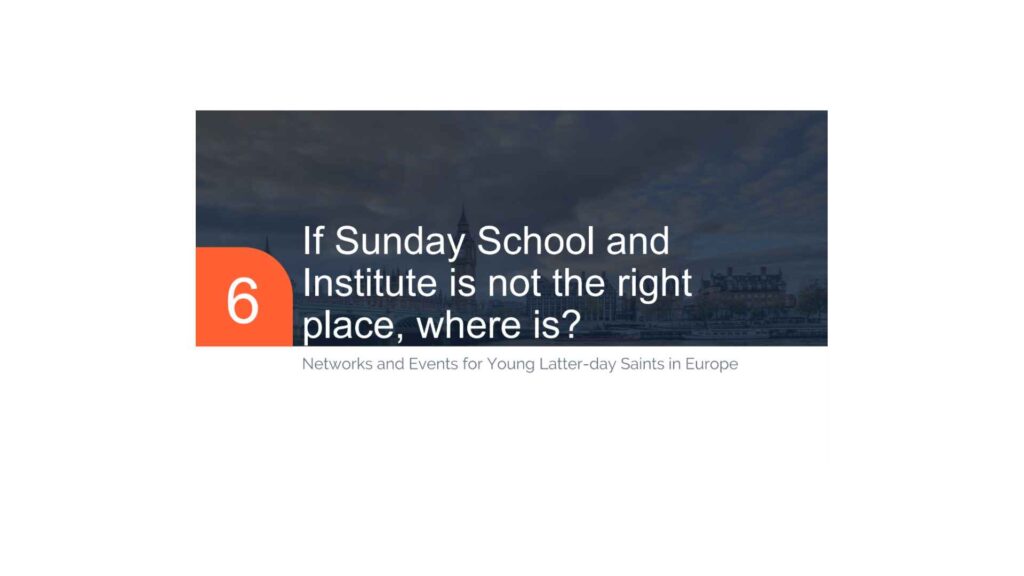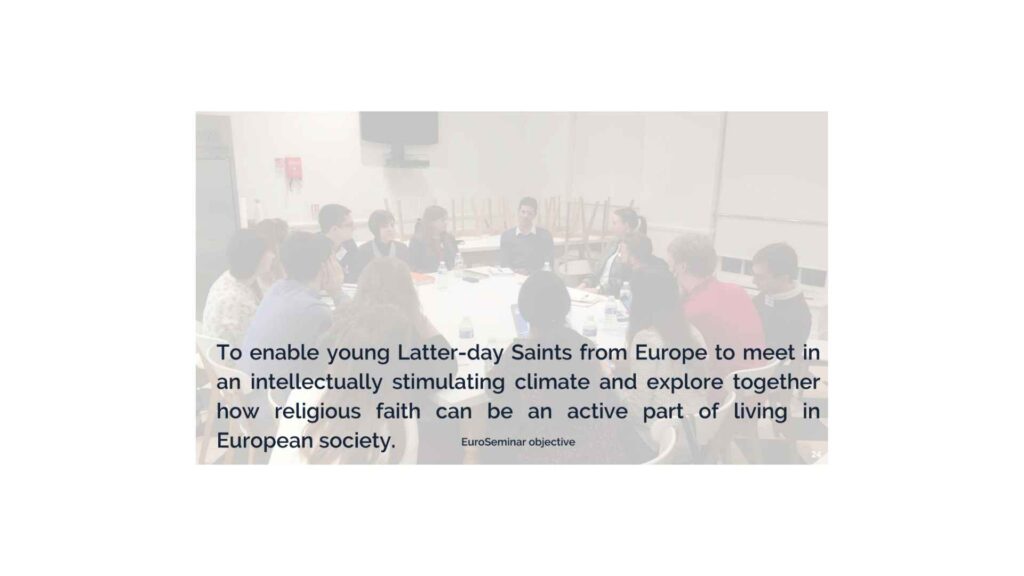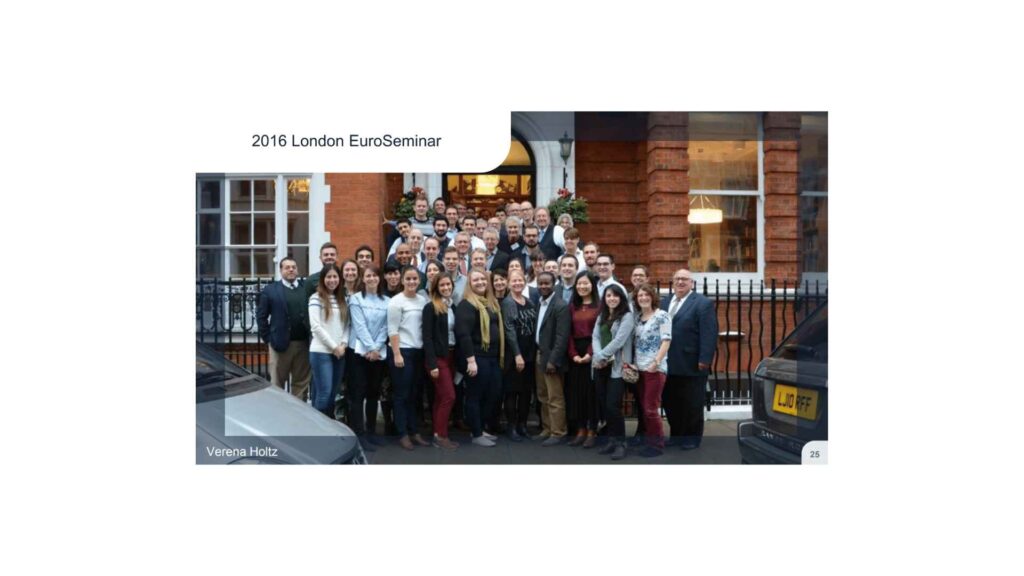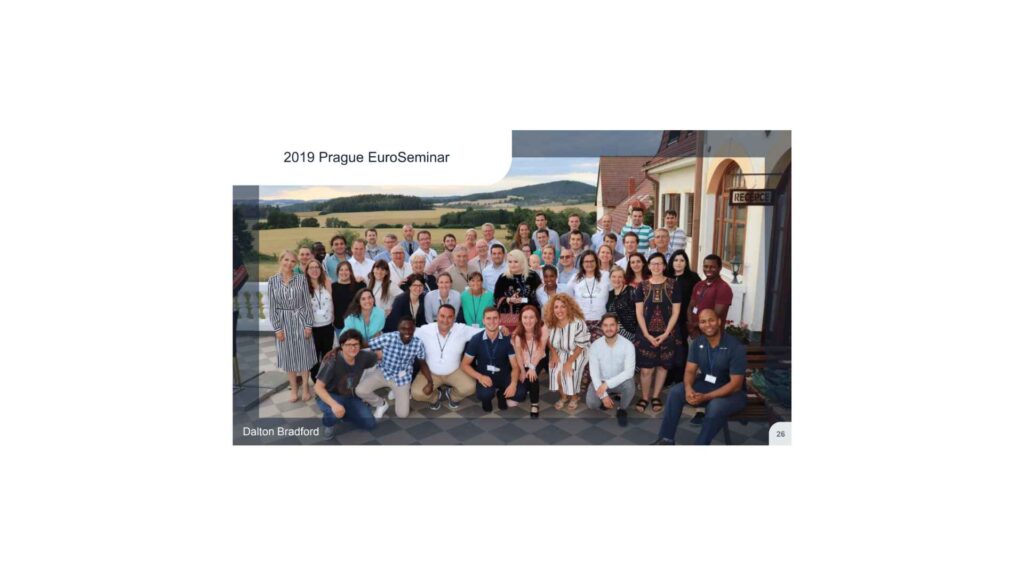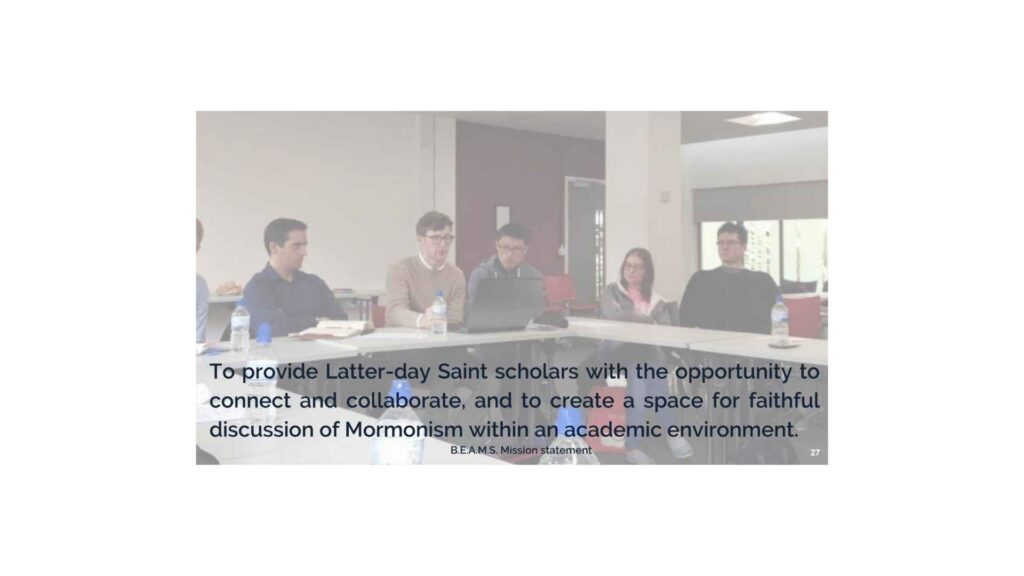Summary
Historian James Perry explores the challenges and opportunities faced by European Latter-day Saints navigating Church history and faith in secular societies. Drawing on personal experience, Church projects, and cultural context, Perry highlights the importance of accessibility, local engagement, translation, and support networks in addressing doubts and strengthening testimonies across Europe.
This talk was given at the 2020 FAIR Annual Conference on August 6, 2020.

James Perry, a historian with a PhD from Lancaster University and contributor to the “Saints” project. Perry provides a progress report on how the Church is supporting European Saints in understanding and engaging with Church history.
Transcript
Introducing James Perry
Our first speaker today is James Perry. He is a historian and a writer for Saints: The Story of the Church of Jesus Christ of Latter-day Saints. He has a PhD in history from Lancaster University, and he’s published articles concerning European Latter-day Saints in several scholarly journals. With that short introduction, I’ll turn the time over to James Perry.
James Perry
When Doubts and Questions Arise: Church History and European Saints
Presentation
Good morning, it is a delight to be with you today to talk about Church history and the European Saints. In my presentation I am going to provide a provisional progress report of recent developments that have taken place to support Latter-day Saints in Europe to access and engage with Church history, particularly for those who have doubts or questions about the faith, including the Church’s origins, leaders, and subsequent development.
First, I will begin by outlining some of my involvement in Church history before providing context on the Church in Europe. I will then provide several examples of the various efforts that have taken place with respect to Church history in Europe over the last five years.
My Background
I was baptized a Latter-day Saint in 2006. As a 16-year-old I was probably unusual in my interest in life after death and the purpose of life. In the late 1990s, my family had begun association with the Church before cooling off and moving to a different area of our town in South West England. In the early 2000s, when my sister turned twelve, the Ward Young Women’s President visited our home and invited her to attend youth activities. Eventually I invited myself to Church activities and events and subsequently began taking missionary lessons, which were mostly led by European missionaries. Prior to this I had very little in the way of religious instruction. My divorced parents had gone down different paths. My father had recently become a Baptist while my mother remained agnostic. Other than some occasional Sunday School classes as a child and typical state religious education there was no religious training or belief passed down to me from my family. After three years of investigating the Church and several particularly strong spiritual experiences from reading the Book of Mormon I had what I needed to make the decision to convert.
Two years after my baptism I began serving as a full-time missionary in the England Manchester Mission, which sits at the heart of the Church’s history in the British Isles. During a mission tour of historical sites including Preston, Downham, and Liverpool, I was captivated by the legacy of the Church and committed myself to researching more about it. Little was I to know that several of my fellow missionaries that I was sat next to would resign their membership in just a couple of years, in part over various issues relating to the history of the Church.1
Doubts and Questions About Church History
Later that year I finished my mission and commenced my studies at Lancaster University where I would go on to complete my undergraduate and postgraduate history degrees. I soon married and much to my wife’s feigned delight, I spent many hours researching and writing about Church history in Europe and the British Isles specifically. Soon a website and Facebook group followed as I sought to share my discoveries with friends and fellow Church members. Several months after our marriage I was called as a Bishop’s counselor and there had some of my first experiences of working one-on-one with people to strengthen their faith. Later, while serving on other Bishoprics and High Councils, I had other opportunities to minister to those who were having doubts or questions about the Church.
People vary considerably in the extent to which they have doubts or questions about the Church and its history. In 2016, my wife and I were called to serve as the Communications Directors for the 2017 British Pageant, which proved to be a remarkable experience that helped thousands of Latter-day Saints to connect with Church history. It also allowed us to interview, address, and discuss Church history topics and events with members across the country.
During that time, we met people who were earnestly looking for answers to questions they had about the origins of the Church and its early history. I soon came to appreciate that helping others to re-engage in the Church and overcome issues relating to Church history could not be solved by intellectual discussions and the dispensing of knowledge alone. Reconversion and stabilization required spiritual groundings along with unconditional love and patience.
Saints
More recently, in January this year I moved my family to Utah from our home in England to work as a Historian for The Church of Jesus Christ of Latter-day Saints working on the Saints project. Family, friends, and fellow Church members were excited for our big adventure. It was and remains a big change for us. Little was I to know that shortly after arriving we would find ourselves facing a pandemic, be shaken by an earthquake, and experience civil unrest. My Saintly wife, who struggles to understand my infatuation with Church history, has been remarkable in her long-suffering with my research into nineteenth and twentieth century Church history.
So now a few words on the history of the Church in Europe.
European Demographics and Church Presence
While the future stability of Europe is uncertain in the face of various geo-political pressures, the continent has enjoyed a relatively stable and prosperous seventy years or so, particularly in the last thirty years. This ‘Long Peace,’ as it is referred to, has previously been identified as the result of the intertwining of military and economic institutions between countries.2 Supranational organizations and increasingly globalized societies have for some people eroded the prospect of another large intracontinental conflict.
The European continent has some 830 million people and there is a high degree of wealth, albeit somewhat unequally distributed across and within countries. Of the European population 727 million or 87.7 per cent are internet users and 41.1 per cent of the total population use Facebook with other forms of social media also widely used. While there are some stark contrasts between West, Central, and East Europe, access to information is made possible through high literacy rates and access to print and digital information. There are, however, notable challenges with language and it has been estimated that more than 200 languages are spoken across the continent, which largely comes as a by-product of immigration.
Secularism and religious disaffection are factors that have contributed to decreased interest and participation in religious organizations.3 Nonetheless, there is widespread religious freedom and the historical challenges facing the Church and its operations in most European countries have largely been resolved. No longer are members mobbed and attacked for attending worship services.
Religious Cyclical Observances
Across Europe the Church has over 500,000 members in some 1,500 congregations.4 Membership and congregational growth is often cyclical in most European countries.5 For example, the introduction of a centers of strength model in Europe has seen a decrease in national penetration by missionaries and Church congregations, but it has resulted in higher youth retention, seminary and institute enrollment, and progress in other key areas.
As my colleague Jed Woodworth noted just recently about religious cyclical observances in North America:
In the 1790s, Methodist circuit riders in upstate New York complained that locals, having freed themselves from Puritan morality, had become a ‘Sabbath-breaking, irreligious race…’ Less than a quarter of the county’s adults then belonged to a church. A generation later, upstate New York was the center of the Sabbath-keeping, church- attending Second Great Awakening. The same phenomenon can be observed closer to our own times. In the late 1960s, the United States seemed to be tearing apart at the seams as many Baby Boomers forsook conventional morality for sex, drugs, and rock ‘n’ roll. But by 1980, many in this same cohort, having joined the Moral Majority, voted for the buttoned-up Ronald Reagan. History is not always a declension narrative.”6
Being in a minority can inevitably cause some difficulties and challenges. This remains true for Latter-day Saints and those seeking to live the standards and teachings of the Church. Membership attrition can occur through insufficient support with social and economic opportunities at times limited through prejudice and ignorance.
Saints Falling Away
As Jan Shipps has previously noted:
For today’s European converts…Everything depends on one’s own resources, insofar as these can be acquired through spiritual experiences and reinforced in the normally small LDS communities. European Saints today who remain faithful and active are indeed a tough breed.”7
As such, there has been, as former Church Historian Elder Marlin K. Jensen has noted, a falling away of some Saints who have come into contact with elements of Church history that they were either uninformed about, had been presented to them in a false or watered down manner, or was severely outdated.8 I have met many wonderful people who have struggled with reconciling their understanding of Church history with what they discover on the internet or from other mediums. Previous studies have identified the role that issues with Church history can play in the deconversion experience of Latter-day Saints.9 Fortunately, I have seen some of these people make steps to return to association with and activity in the Church.
Steven E. Snow
Another former Church Historian, Elder Steven E. Snow, also grappled with this issue during his time in the department. A guiding element of his tenure was to provide the Saints with the best information available. As Elder Snow once noted:
The young people, particularly, they’ll get on one site, and they’ll say, ‘Well, I didn’t ever hear that, and then that’ll lead them to another. And they just keep going. And then there’s this credibility issue that begins about, ‘What else is the church hiding?’ Well, we’re not hiding anything I think in this day and age it’s become apparent that we really do need to provide a series of answers that will help our members better understand these chapters of our history.”10
Progress has continued to be made in this area over the subsequent years with the release of new records, publications, the translation of materials, and a decentralizing Church history departments. Nonetheless, there are those who encounter aspects of the Church’s history that troubles them to the point of resigning their membership or suspending active participation in the faith.11
European Saints
With high levels of literacy, education, and internet access amongst Europeans it is of little surprise to see some members encountering ideas, materials, and articles that both support and challenge their faith, particular due to the secular nature of most European societies.12 These experiences within religious movements are not unique to Latter-day Saints. Ultra-Orthodox Jews and other Christian denominations are experiencing similar patterns of behavior.13
Nonetheless, European Saints in their largely secular societies have persistently and consistently lived the gospel. My daughters are fourth generation Latter-day Saints on their mother’s side and in some cases, there are seventh and eighth generation Latter-day Saint families in the British Isles.14 As such, a mature and well-established presence has emerged in many areas of Europe despite the relentless march of irreligiosity, apathy, and secularism. The challenges brought about by the rise of the internet can be addressed, overcome, and be used for good.
Each country has its own website that members and non-members can use to access local information and news. In the case of the United Kingdom (UK) an official Church website was operating by at least 1998. In this example from 2001 the history of the Church is placed front and center. In most cases the sites are occasionally updated with content pulled from central newsrooms or with short stories written by in-country public affairs specialists. For me this seems like a venue that can be significantly developed to provide a valuable indigenous resource with content that is tailored to the needs of Saints in particular countries.
The difficulties facing European Saints regarding the availability of resources privileges the wealthier and better-connected Saints – many of whom are likely to be well-established and multi-generational Latter-day Saints. The situation makes it difficult for the young and recently converted to necessarily access faith affirming material.
Accessibility
In her study of Latter-day Saint exit experiences, Amorette Hindaker found that in every case there was a period wherein doubting Saints began researching literature and materials.16 For Latter-day Saint scholars in a worldwide faith there is scope to better ensure resources are accessible to the membership to support those experiencing doubts and questions. Translation, therefore, is paramount in the future expansion of placing faith affirming materials in the hands of Saints.
I remember shortly after I joined the Church, I was given a talk assignment. As I was preparing, I began looking for a faith promoting story to share, but I could only find early convert pioneers with a limited amount of content related to the British Isles. In 2018, I wanted to try and tackle the barriers facing Church members from accessing Church history stories and resources relating to the British Isles. I also wanted to inform and expose the Saints to a wide range of stories, including those from more recent years. At that time, I began working with the UK and Ireland website administrator to create a Church history area on the website. After some discussions we developed several sections where local historical stories could be stored and made available to the Saints.
The Process
In conjunction with the communications team these stories are reviewed by historians, processed, verified, and edited before being published for the Saints and interested persons to read and share on social media. Simultaneously, many of these stories were then included in the local pages of the Ensign to reach additional readers.
The result is a respectable collection of British stories, a more engaged Latter-day Saint audience, and a developing local capacity amongst specialists and other members to discuss and produce Church history.
This development was made possible through the additional support of the UK and Ireland Church history Committee and the UK and Ireland Public Affairs Team.
Church History Committees
In 2017 a Church History Committee for the United Kingdom and Ireland (initially called a Council) was established. The committee met for the first time in Chorley, Lancashire, that October. The expectations of the committee members varied somewhat, but at the heart was a desire to strengthen the faith of the Saints.
As was noted in the historical record:
[They hoped to bring] Church history alive, creat[e] increased opportunities to collaborate with auxiliaries and other Church departments, increas[e] the capacity to impact people’s lives for good and rekindl[e] the spark of the gospel in less active members.”
The Committee is led by a Church History Country Advisor and is composed of Church History Specialists from across the country who meet twice a year. Agenda items include oral history projects, exhibitions, special projects, and training. A key function of the committee is to provide support to Church History Specialists and to build capacity amongst them to effectively work with Stake and Ward leaders with respect to Church history. These men and women are trained in the resources developed by the Church in addition to developing their own. They take the lead in promoting engagement with Church history across the country and support the Stakes in recording their history and giving presentations to members.
As my fellow committee member Jill Morgan noted: “The Church history council was formed so the individual efforts of Church history specialists around the country could be coordinated and larger projects could be undertaken.”17 This observation has now repeatedly been manifest over the last few years. I should point out that all this work is completed by members as one of their Church callings with minimal financial implications. Now, I would like to give one example of how the UK and Ireland Church history Committee used European Church history to help those who have doubts and questions.
Church Building Program
Elder Marlin K. Jensen noted the following in 2012:
History in its most basic form is a record of people and their lives, and from those lives come stories and lessons that can reinforce what we believe, what we stand for, and what we should do in the face of adversity. Not all the stories that make up our history are of the epic nature of Joseph Smith’s First Vision or of Wilford Woodruff’s mission to England. In fact, some truly remarkable stories come from the lives of very ordinary Latter-day Saints, which most of us are.”18
By the late 1950s, Church membership in the British Isles was rapidly accelerating. Until the turn of the century there were no concerted efforts to build buildings for the saints. The millennius belief of the Church very much led them to the gathering philosophy, which meant minimal resources were expended for the provision of worship. By the 1950’s we have a temple. We have the dedication of a flagship chapel in the early 60’s in London.
Most British Latter-day Saints today trace their family’s origins in the Church back to this late 1950’s/early 1960’s period, where the saints met in fairly awful circumstances.
Documenting the Church Building Program
In 2017, I was asked to assist with a project to document the Church Building Program that began in the British Isles in 1961. Hundreds of young men and young women were called as Building Missionaries, some of them having only been baptized a few short weeks. They were mostly teenagers or young adults who were sent to spend two years building chapels or assisting in the administration of the program. Building supervisors and members of the Church Building Committee headquartered in Salt Lake City were temporarily assigned to oversee construction.
Many of these men and women are still alive and active in the Church, but some have subsequently left the faith. Our small team went about gathering resources and records relating to the period and dozens of oral histories were conducted. We received photographs, scrapbooks, letters, stories, and even hammers and tool belts from their days as a building missionary. With many now aged in their 70s and 80s we sought to preserve their stories of faith and sacrifice. Regardless of their current activity and membership status, we reached out and were rewarded with great interest and appreciation.
For years some of them had felt as if they had served a second-rate mission. Despite having served for two years or more their service was not reflected on their membership records. These were Saints whose efforts were at risk of being forgotten by the wider membership, despite most chapels in the UK today being built by these members and missionaries.
Presentations, workshops, exhibitions, activities, food, entertainment, and touching stories were shared on the day of the reunion and people from across the world came together to remember their time as building missionaries. We also had former missionaries who had left the Church decades ago who came along to see their old companions and fellow missionaries. Some had not seen each other for more than fifty years. A testimony meeting was held the next day and touching words were shared.
During the reunion there were Church Builders I spoke to who said they had just never felt right after their missions. They had come across things concerning the Church that had caused them to doubt their testimony and even their faith in God. The reunion and related historical activities were therefore also missionary opportunities that facilitated discussions concerning doubts and questions they had.
That one event did not fix the concerns that less active and former members had, but it was an opportunity to have them in a chapel and to have conversations with Church history specialists and experienced Church leaders. The missionaries renewed connections and the reunion continues to bear fruit today as we have less-active members continuing to reach out and engage with us, still.
As he prepared for the assignment, he had a profound revelation. Of the experience he said:
During a sleepless night I had an impression that the young adults were the future of the Church in Europe and I needed to focus on them. It turned out to be one of the most rewarding periods of my long ministry. Some very satisfying results have occurred during the last few years as we have listened to your ideas and concerns.” 20
In late 2003 and early 2004, under an initiative started by Elder Marlin K. Jensen, who was then the Area President, four institute outreach centers, which were later known as Young Single Adult Centers, were opened in Europe namely in Copenhagen, Denmark, and in the German cities of Berlin and Hamburg. The centers were an extension of the institute program and aimed at providing a setting wherein YSA members and non-members could socialize, take institute classes, and meet other people their age.
Elder Perry expanded and enhanced the program and it was soon rolled out across Europe. A senior missionary couple would provide support for the young adults and along with a YSA Center President would work to socialize, reactive, engage, and provide support for the array of young single adults, ranging from students to graduates, and working professionals.
Experience
One senior missionary involved in a center in France described the mission to a YSA Center as follows:
Our job will be to set up a Center that will provide a place for young people, members and non-members alike, to congregate, to have FHE, institute classes, activities, games, service projects, etc. It will be a place of studying, of learning gospel principles, and a place where the spirit will be felt. It will be a place where the youth will feel love and will be comfortable. They will learn to be worthy, productive, moral, and useful adults. They will learn to love the Lord and to feel His spirit.”21
As an awkward recently returned missionary in 2010, I was called to serve as a Young Single Adult Center President for two Stakes in North West England. There was an institute enrollment of over 100 and a YSA sacrament meeting was held once a month. Weekly lessons and activities were held on the Preston England Temple site and there was much good done. This included the commencement of a yearly ‘Temple Convention,’ where the typical social and cultural activities were supplemented by participation in temple ordinances and spiritually minded workshops.
My Role
In this role I interacted with several young people undergoing a faith crisis, some of which was brought about by the increased use and availability of resources, discussions, and social content on the internet.22 Several times I discussed topics with young single adult men and women who had come across things such as the Mormon Stories Podcast or the exMormon reddit forum. The staging of the Book of Mormon musical in March 2011 generated renewed interest in how the Church was viewed by those inside and outside of the faith. When Elder Jensen came to speak at our Stake Conference in June 2012 several of these YSA were able to attend. Some of them benefited from it, while others did not.
Still, the setting was not suitable for some of the YSA in Europe. There were freshly turned 18-year-olds, recent converts, and then there was also older YSA who were completing advanced degrees in the humanities, arts, sciences, and other fields. With a relatively small institute and only a modest selection of classes it meant there were significant differences in the depth of class discussion, particularly in the Church history and Doctrine class. Some felt it was too intellectual and high-level whereas others felt it was not enough.
As such, while the Centers successfully met the social needs of most YSA they struggled to fully cater to the intellectual needs of all YSA. Access to advanced academic scholarship, historical resources, and the forums to discuss issues with non-judgmental experienced and faithful Latter-day Saints are needed to help those who have questions and doubts. After my stint as a YSA center president I realized that while the centers played an important function something else was needed.
If Sunday School or Institute is not the Right Place, Where is?
This leads me to my final point of how Church history has been used to strengthen European Saints. In an interview with PBS in 2006 Elder Jensen noted the importance of doubt and questioning. Of that subject he said:
…if you’re honest and if you’re really a true seeker — if you’re not just a skeptic sitting back and taking potshots at everything and everybody and their philosophy of life — I think it tends to bring one to a deeper seeking, and I hope that’s what my doubts have done. They’ve caused me, I think, to study and to ponder and to compare and in the long run.”23
For some conversations Sunday School and Institute Classes are just not the appropriate or suitable venues. In 2016 some of the first steps were taken to accommodate young adults in Europe who needed alternative venues to talk, network, and process what they were thinking and feeling, particularly in relation to Church history.
First EuroSeminar
In December of that year, the first EuroSeminar was held at the BYU London Center. Sponsored by The Wheatley Institution, Neal A. Maxwell Institute for Religious Scholarship, International Center for Law and Religion Studies, BYU Law School, and the BYU London Centre. Forty participants from eighteen countries gathered for three days of presentations, discussions, and small-group sessions. Presentations were also made by Area Authorities including the Europe Area President.
The EuroSeminar has been repeated several times and been expanded to South America. Most recently there was a seminar in Prague, Czech Republic. The objective of the EuroSeminar is noble, timely, and appreciated by the participants.
To enable young Latter-day Saints from Europe to meet in an intellectually stimulating climate and explore together how religious faith can be an active part of living in European society.”
It is precisely in these kinds of environments that Latter-day saints’ faith can be nurtured, doubts addressed, and the flickering flame of testimony fanned.
British and European Association of Mormon Scholars
One of the other projects that has taken place more recently is the British and European Association of Mormon Scholars. We realized quite early on that in Europe, many students of graduate programs experienced a faith crisis, but had no one that they could turn to, no one that they could talk with. And so BEAMS were set up in order to help those navigate the tension between their intellectually informed worldview and their frustrations with the Church or with its history. This was an opportunity for experienced Latter-day Saint academics from Lancaster, Oxford University, and other international European universities to meet with young scholars and to support them through these times. With small numbers at first, but growing quite quickly and with funding from the Neal A. Maxwell Institute and the BYU London Center, events were put on which proved to be of profound value and use to thes saints, particularly in assuaging the doubts or concerns that they had. More importantly, it was a venue where they could express and freely explain their own thoughts without feeling the judgment that might occur in other settings.
Doubts and questions will inevitably arise as we navigate our mortal probation. For Latter-day Saints, some of these issues will arise in relation to the origins of the faith. In Europe, there is a cadre of faithful Latter-day Saints who are genuinely seeking to help other Saints engage in Church history and find answers to questions. I’ve outlined some of those efforts taking place today. They seek to help support young Latter-day Saints who feel unable to discuss their questions with those immediately around them.
Church History
From the inception of the Church, its history was one way of bringing good to the Church and particularly for the rising generation. As noted in the Doctrine and Covenants:
Nevertheless, let my servant John Whitmer travel many times from place to place and from church to church, that he may the more easily obtain knowledge—preaching and expounding, writing, copying, selecting, and obtaining all things which shall be for the good of the Church and for the rising generations that shall grow up on the land of Zion, to possess it from generation to generation, forever and ever.”
The prior concentration of personnel, resources, and attention in one central location—in this case, Utah—has been necessary from an operational point of view. However, it has left the global Church membership somewhat disempowered from participating in and owning their own Church history. A worldwide faith requires a worldwide approach to recording and telling its story.
The decentralization of certain operations has, in some part, begun to restore a sense of balance for international members. While there are improvements to be made, this process of decentralization offers crucial benefits both to the Church and its members.
If we are to counter anti-faith-affirming materials, it is vital that we cultivate local-level engagement with Church history and more fully embed it into the mindset of members to inoculate them from the notion that things have been hidden from them. Similarly, by developing local capacity, there is a stronger base of members and leaders who can work and support those struggling with doubts or questions about Church history.
Strengthen Thy Brethren
Having most of the world’s experts on Church history in one location can bring about much good, but how much more good could be done if properly distributed globally, especially in a digital age?
If, as Elder Perry suggests, the young adults are the future of the Church in Europe, we must provide them with additional resources, opportunities, and contacts to engage with Church history. Resources such as the Gospel Topics Essays have already proven invaluable in providing clear insights into difficult topics and defenses of troubling questions.27 To combine the growing body of resources with a decentralized trained Church History Specialist force can be of significant long-term value. Continuing to support initiatives such as the EuroSeminars and BEAMS are other means of strengthening and building capacity.
Finally, if we can learn anything from the last few years is that the work of the Lord continues to unfold and expand across the world. As we have seen with the associated blessings in the expansion of Stakes, Seminaries, and Temples, we too will see tremendous improvements in our ability to protect youth and assuage investigators concerns as Church history operations and awareness continue to expand and develop globally. While grappling with doubts and questions is inevitably a personal experience, having resources and local capacity to support people through these difficulties will go some way to fulfilling the Saviors injunction to nurture others. For as he declared, “When thou art converted, strengthen thy brethren.”28 Thank you very much.
Audience Q&A
Scott Gordon:
The question I have—and of course, you’re in the British Isles, and you almost speak the same language we do—is, what barrier does language play in Europe?
James Perry:
It’s a really good question. As I mentioned, there’s a wide range of languages spoken in Europe, and with increased immigration—my PhD is on the history of immigration into Britain and Europe—we see an increased need for materials in languages that the Church previously hadn’t had available in translation, such as various African and Eastern European languages. We’re seeing growth in certain countries, which requires more than just the basic resources translated. I mean, the Book of Mormon is the critical and pivotal text that has to be translated, but for Saints who struggle with Church history—for example, in Eastern Europe or in countries where we don’t have access to translated texts and where they may not speak English—I think there’s more that we can do to try and support them. Translation is a very tricky issue because it requires experience, time, and money, but ultimately, if we want to be a worldwide faith, we have to ensure that we’re providing resources to a worldwide audience.
Scott Gordon:
FairMormon, Book of Mormon Central, and Interpreter provide a number of free resources to people all around the world. How familiar are people with those organizations, and if they’re not, what can all of our organizations do to make that better?
James Perry:
Again, it’s a really good question. I think more than anything, it’s about networks and the dissemination of information—that’s critical. I mentioned that about 40 percent of people in Europe have a Facebook account, but that doesn’t mean they all use it. I think we need to ensure that we’re covering multiple ways of disseminating information—not just relying on the internet or social media.
One of the best networks we have, which we don’t realize, is the distribution centers across Europe. There’s a huge push to ensure that people get to the temple within six weeks of their baptism. If resources were made available in the distribution centers, or if there were posters with information, it would be an easy win-win to ensure people gain extra information about events, resources, websites, and support groups—beyond just pictures of the Savior, scriptures, and music. For me, that’s one of the few opportunities we have in the Church where nearly the whole temple-attending population is present, and that would hopefully serve as a catalyst for ensuring that information gets shared.
I would say, with the likes of FairMormon and Interpreter, I consume much of this material myself, but I think I would place myself as the exception rather than the rule among European members. There just isn’t the awareness and connection that there needs to be. For me, distribution centers seem like an easy way to try and network some of these resources to Saints.
Scott Gordon:
I think it’s an excellent idea. We run into challenges where people say, “FairMormon? Wait a minute, are you that anti-Mormon group?” It’s like, “No, no, that’s not us. In fact, you can look us up on the Church website—we’re actually listed there,” and the same with some of our sister organizations.
When doubts and questions arise, what doubts and questions do European Saints have about the Church or Church history that might differ from those of typical American Saints? Or are they basically the same questions?
James Perry:
No, I think there are probably a lot of the same issues, but I would say one of the unique challenges is that there is, unfortunately, in parts of Europe and the world, a strong anti-American sentiment. One of the questions and issues people have is that they feel it’s an almost American-dominated religion. When they study the history, they want to see their own face, their own voice, and their own people in that history. That takes cultural awareness and recognition. As I mentioned, the Church History Department is doing a good job of trying to better represent international locations.
There is also, particularly along the Wasatch Front or in the Intermountain West, a sense of generational membership, where families have long been in the Church. This creates an “inoculation” to topics such as polygamy and controversial events in Church history. Amongst families in Europe, however, these topics can seem really disconcerting because they emerge suddenly and feel alien to their experience. For example, I met a few American missionaries when I was being taught, but most of my teachers were Europeans. Their understanding of polygamy and their ability to answer questions about it wasn’t as strong as some Americans, who had grown up with stories and explanations about it.
So, I think there are some differences. A big driver for many European Saints is wanting better representation of their own countries in Church history, and there’s also a tendency at times to overuse the same stories while neglecting whole periods of Church history, which have remarkable and faith-affirming experiences.
Scott Gordon:
A large number of Latter-day Saints in the United States trace their pioneer ancestry back to the British Isles but are often unaware of the challenges and beauty of the community of Saints living there today. How can we build greater unity and connection between the Saints in the U.S. and the Saints in Europe and elsewhere?
James Perry:
This is a very good question. I think there are a few different audiences. For the scholarly Latter-day Saint audience or the interested family historian, I think it’s about cultivating relationships. The history of Church history in Europe, for a long time, has been about acquisition—taking local resources and bringing them to Utah. It’s only in the last few years that we’ve seen the rise of resource preservation centers, where Latter-day Saint history now stays in the country. I think that’s going to help British and European Latter-day Saints feel like their history is not just being exported.
For American Latter-day Saints, connecting with European scholars and Church history specialists is crucial. These specialists want to help but often find Americans bypassing them to get a resource or conduct interviews. Specialists in the region can provide valuable assistance.
What I’m trying to do is build these connections amongst the saints. Whether it’s through BEAMS, EuroSeminars, or other efforts, I think what we need to do is recognize that we might have different histories, but that we are one body, the Saints of Christ. Whether we make connections through providing resources, engaging, or celebrating what’s happening in Europe, it can help build bridges between different communities.
One of my concerns in our virtual world today is thinking, “Gosh, we can have more virtual conferences and virtual talks.” I think this will be very important. However, I’m curious whether you think that might last or if it might lack the personal connections and networking.
This is by far the most social thing I’ve done in a while, so I realize how much I crave personal interaction. As a global scholar, though, in my professional work at other universities, I’ve often engaged in distance conference calls and academic conferences with “talking heads.” I think that is better than not having it. I think there’s a good, better, and best, here. Given that it can significantly mitigate costs, electronic communication can really help people on the fringes of scholarly or church circles feel more included or more able to participate.
Speaking to many scholars I know in Europe, unless you’re in a professional capacity at a university—in which case it’s often a secondary research interest—there are very few opportunities to discuss Church history or LDS-related studies. Virtual conferences, breakout sessions, and guest talks electronically are excellent ways to bridge this gap. It’s only since COVID hit that we’ve realized how beneficial and feasible these methods can be.
Scott Gordon:
Someone asked if there’s a way you can provide a reference for your quote of Marlin K. Jensen stating, “We’re not hiding anything.” Can we access that?
James Perry:
Yes, my papers are fully referenced, so I’ll be available afterward to share those.
Scott Gordon:
What positive or negative results have you observed among Church members and units as the result of the closing of long-standing branches to create large wards?
James Perry:
That’s an excellent question, and I can imagine a few people who would ask that. There’s often a sense of disappointment. I don’t want to stray too far into missiology right now, but there are different views on how the Church could expand in Europe. For the last 20 to 30 years, we’ve had the “center of strength” model. In places like Belgium, for example, there has been consolidation of several long-standing branches, which can be seen as a step back by some.
However, I think we have to look at the wider picture. We’ve seen retention rates among youth, seminary and institute enrollment grow as a result. My wife and I come from a small branch of about 40 people in the far north of rural England, and it truly benefits some members and youth to have a sense of community.
That said, there are trade-offs, such as the distances involved and the challenges of overseeing a larger community. I remember traveling an hour and a half each way to visit one person for a ministering visit. Some Saints have struggled with their faith, wanting the Church to adapt constantly. But we know that the strength of the Church is not in congregations—it’s in the personal observance of the Saints. From my observations, I only see growth and developments there.
Scott Gordon:
Very good. You mentioned some of your fellow missionaries who left the Church. How serious would you say they studied the history of the Church? Did any of them end up pursuing a PhD in History like you did?
James Perry:
That’s a great question, and it’s a very personal thing for many people. I was speaking to a relative recently, and there are those who invest considerable energy and are genuinely emotionally distraught by what they discover. I was fortunate to have strong spiritual experiences, and I’ve experienced things that helped me navigate doubts. Like Elder Jensen said, I think doubts can be a way to grow, develop, and understand—not just something to rationalize or dismiss.
I wouldn’t want to comment on how deeply those particular missionaries explored the issues they faced, but I like to think many of those I’ve ministered to have tried to explore thoroughly. However, I imagine there’s a spectrum—some people loosely look at a couple of things and are put off completely. I saw this with investigators on my mission, where hearing one thing turned them off entirely. But there are also multi-generational Church members who read books, talk to authorities, and try to understand. So, there’s definitely a spectrum.
Scott Gordon:
One European Saint emailed us with this observation: It seems that European Saints sometimes import cultural discussions and problems from U.S. Church membership that aren’t really issues in Europe, and then make them into big issues. Can you comment on that?
James Perry:
Yes, I’ve experienced this too. I arrived in Utah in January, so I had about four or five weeks of Church here before everything shut down. Among European Saints, there’s a perception—positive and negative—of the Church in Utah. There’s also this idea of a “Utah Mormon bubble” that’s viewed critically by some European Latter-day Saints.
I’ve heard Europeans say that all Americans are wealthy or have been in the Church for generations. But there’s a wide spectrum of circumstances here in Utah, just as there is in Europe. My neighbors include both a convert of a few years and a sixth-generation Latter-day Saint. Sometimes, though, Europeans view certain social issues differently and find a gulf between their perspectives and those of Utah Saints, which can lead to criticism.
We need to be more tolerant and patient, recognizing that countries, societies, and peoples progress at different speeds and have different views on issues. As a Latter-day Saint faith, we represent plural communities within one body.
Scott Gordon:
We’re out of time, but I wanted to share a recommendation we received: putting more books in Church libraries so they’re accessible to more people. Additionally, some people are interested in your agenda for seminars, so we can discuss that later.
Thank you so much for your time. We greatly appreciate your insights.
James Perry:
Thank you very much. Thanks for having me.
Endnotes & Summary
Jeffrey’s talk, What Do We Treasure?, explores how different worldviews shape our understanding of the gospel and influence what we see as the “good life.” He identifies four primary worldviews—the Expressive Gospel, Prosperity Gospel, Therapeutic Gospel, and Redemptive Gospel—each defining success and fulfillment in different ways. While Expressive Gospel prioritizes self-expression, Prosperity Gospel equates righteousness with financial success, and Therapeutic Gospel emphasizes emotional well-being, the Redemptive Gospel teaches that true success is found in reconciliation with God. By examining these perspectives, Jeffrey warns that misplaced values can lead people to misunderstand the gospel’s true purpose.
The talk highlights how Gospel Counterfeits arise when cultural influences subtly redefine gospel vocabulary and shift the focus away from Christ. He provides examples of how phrases like non-judgmental love and authenticity take on different meanings depending on the worldview, leading to confusion and potential spiritual drift. Many individuals, even those originally converted to the Redemptive Gospel, gradually adopt cultural values while still using gospel language. This process results in a faith that, while still appearing religious, may no longer align with the teachings of Jesus Christ.
Jeffrey concludes by emphasizing the need for spiritual discernment and doctrinal clarity. While Gospel Counterfeits persist because they offer comfort, validation, or worldly success, the Redemptive Gospel calls for transformation through Christ. Faithful discipleship requires prioritizing God’s values over societal expectations, measuring spiritual success by personal sanctification rather than external achievements. By recognizing and rejecting distorted versions of the gospel, believers can ensure their faith remains rooted in eternal truths rather than cultural trends.
All Talks by This Speaker
coming soon…
Talk Details
- Date Presented: August 9, 2024
- Duration: 26:31 minutes
- Event/Conference: 2024 FAIR Annual Conference
- Topics Covered: Redemptive Gospel, Prosperity Gospel, Therapeutic Gospel, Expressive Gospel, gospel counterfeits, authenticity, covenant-keeping, LDS worldview, personal fulfillment, character transformation, reconciliation with God, faith crises, gospel vocabulary, Maslow’s hierarchy, LDS apologetics
Common Concerns Addressed
The Church is American-focused and doesn’t represent my heritage.
Decentralization, translation efforts, and international historical initiatives are bridging that gap.
Church history issues led me or others to leave the faith.
Perry emphasizes informed engagement, empathy, and global outreach efforts to support reconversion and testimony.
Apologetic Focus
Decentralized Church history for a global membership
Faith crises as a space for deeper engagement
Local storytelling as a tool for spiritual identity and resilience
Explore Further
coming soon…
Share this article
